Python Automation Framework
In essence, a Python Automation Framework signifies an application-specific infrastructure with simplifying scripts and APIs. Programmers use this framework to execute several tasks without human intervention, such as software testing and web scraping. You’ll find that Python, combined with appropriate automation frameworks, amplifies the ease of execution and augments efficiency—key attributes in software development.
For instance, frameworks like Selenium, Pytest, and Robot Framework embody key automation entities. These systems endorse the power that Python packs when combined with guided structures in the backdrop.
Python automation frameworks pose a suite of benefits ranging from scalability to maintainability. Here’s the crux of why automation frameworks in Python gain such traction:
- Enhanced Productivity: Automation negates the need for manual input in recurring tasks. This cutback enhances speed, delivers error-free outcomes, and skyrockets general productivity.
- Easy Debugging: Python frameworks structure the code into manageable chunks, thereby simplifying debugging operations. For example, Pytest offers detailed reports on code errors, facilitating effective debugging.
- Improved Flexibility: The extensibility and adaptability of Python services make them flexible to work across different platforms. Frameworks like Selenium can execute tests across a variety of web browsers.
- Efficient Time-Management: Automation frameworks streamline complex procedures and reduce prolonged coding hours. They effectively manage time, translating to faster project execution rates.
Adopting Python automation frameworks denotes good programming practices and helps leverage Python’s capabilities fully. Therefore, understanding these systems is pivotal for any developer intending to scale in the software development landscape.
Key Features of a Python Automation Framework
Peeling back the layers of Python automation frameworks reveals a plethora of compelling features. Diving in depth, let’s explore these key features:
Python automation frameworks, such as Selenium and PyTest, possess a simple and readable syntax. Consider Selenium, an open-source web application testing framework. It adopts Python’s readability, favoring clear, straightforward code. For instance, if there’s a task to automate a login process on a web page, the structured and easy-to-understand syntax makes it efficient for developers to write the script. They don’t grapple with complex coding terminologies, making the debugging process a breeze. This simplicity amounts to quicker task-completion, a boon for developers aiming to save time and resources.
The extensibility of Python automation frameworks can’t be overstated. They support plugins and integrate seamlessly with other software tools. Let’s take PyTest, for example. It’s renowned for its extensible plugin system, facilitating the addition of hooks for code coverage, xUnit-style setups, integration tests, and more. Versatility rings true for Python automation frameworks too.
An unmatched asset for Python automation frameworks is their robust community support. Millions of enthusiastic developers form Python’s global community, ever-ready to assist their peers. Queries get resolved promptly and an abundance of learning resources, from forums to video tutorials, are at the disposal of newcomers and experienced coders alike. For instance, questions raised about Robot Framework on GitHub or StackOverflow receive speedy, instructive responses from the global Python community. This wealth of community support expedites problem-solving and fosters continuous learning, further enhancing the efficacy of Python automation frameworks.
Popular Python Automation Frameworks
Robot Framework is widely recognized for its simplicity, enabling both tech-savvy and novice users to automate processes effectively. It utilizes keyword-driven testing, a functional style that eases the learning curve. Its data-driven test cases, for example, ability to log the usage of parameters during a test, enhances process efficiency. Robot Framework also offers extensive library support, allowing for seamless integration with different tools and applications. Agencies like NASA have utilized Robot Framework due to its versatility, stability, and scalability.
PyTest stands out due to its unique feature: adopting a “plain and simple” approach to writing test cases. This framework facilitates testing practices and encourages compact test suites by automatically detecting and running test functions. PyTest’s ability to support parameterized testing – allowing multiple sets of data to be used in the same test – is a major strength. It also handles “fixtures” extraordinarily well, ensuring resources are set up before a test and cleaned up afterward.
Behave is a python-based BDD (Behavior-Driven Development) framework that excels in language readability. It enables non-programmers to write behavior specifications which can then be automated. Behave uses ‘Gherkin’ language to define desired behaviors, aligning closely with natural English speech. This language uses actions and outcomes like “Given, When, Then” to describe the behavior of software systems. Through this, it strengthens communication between technical and non-technical stakeholders. Among the reputed organizations using Behave is the European Space Agency, leveraging the framework’s versatility and language clarity.

